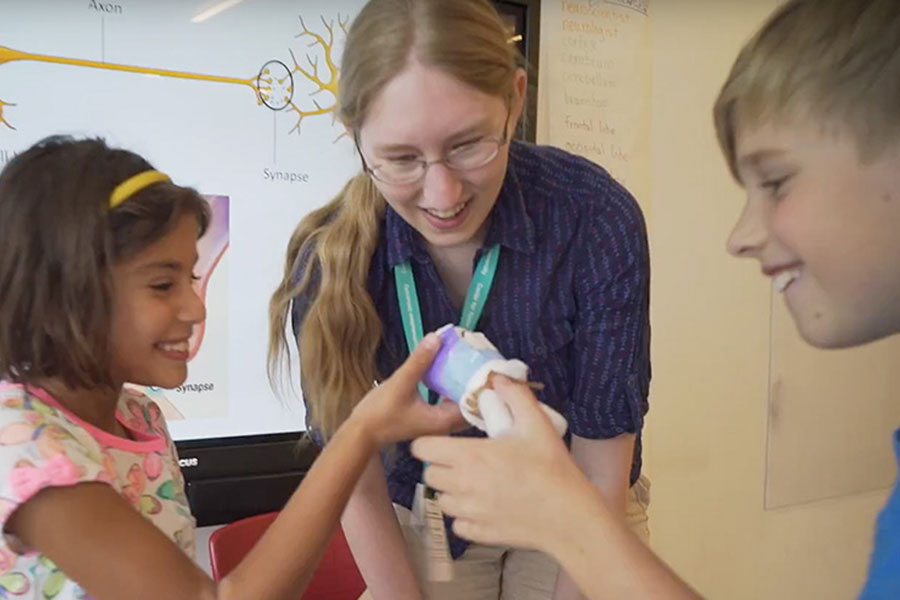Turning Curiosity into Problem-Solving through Design Engineering
By Leslie Morrison, CTD Summer Leapfrog Coordinator
Engineers design, build, and improve on structures, electric systems, bridges, roads—anything that has to do with identifying a problem and finding a solution in how it’s built or implemented. In 2013, the Next Generation Science Standards recommended strategies and goals for integrating the sciences in elementary through high school classrooms. These integrated sciences are science, technology, engineering, and mathematics.
Research suggests a wide range of benefits to teaching engineering in younger grades. Engineering caters to students’ natural curiosity about the world, as well as their skills as builders. With a shared goal in an engineering project, students build communication skills, they collaborate, and they see connections across all disciplines and into the world they live in. Students learn to take risks and discover that failure is an important part of the process.
Engineering is critical to every community, and Chicago serves as a fascinating example of interesting engineering problems and innovative solutions. Many of Chicago’s engineering projects have focused on its location on both the Chicago River and Lake Michigan. In the 1800s, Chicago had drainage and sewerage problems due to its sandy, clay soil. Heavy rains didn’t drain well, so the streets became full of mud and muck, and in some places this gunk was 4 or 5 feet deep. In addition to the inconvenience of the mud, the poor drainage of rain and sewerage contributed to the spread of deadly cholera outbreaks. In 1854, for example, 1,549 residents died from cholera, which was more than 5 percent of the city’s population at the time.
The city tried several solutions, including grading the streets so excess water would run into the Chicago River. However, the drainage was too slow. Chicago workers then tried a new solution: they put down wooden planks. But the planks rotted quickly from the damp streets beneath. By 1855, the city decided it was time to raise Chicago up and out of the sludge. Because the city was only about 4 feet above the water level of Lake Michigan, the ground could not be dug out to build sewers underground. Instead, a drastic engineering solution was proposed. All city buildings would need to be raised 4 feet, 6 feet, in some cases 10 or 14 feet higher, to allow for sewers to be built underneath them. Buildings, even large hotels, had to be raised up onto metal cranks and stilts. Once the buildings were slowly raised over several years, higher foundations were built beneath them. Sewers were built on top of the streets, and then the streets were filled in to meet the front doors of the raised buildings. This was the beginning of a complex and bold engineering project the entire country looked to with wonder. To this day, Chicago continues to improve on the design of this major engineering project.
By studying Chicago’s history from an engineering perspective, curious students can develop an integrated understanding of how engineering projects can be designed and implemented. How has design engineering impacted your community’s change and growth?
Resources
Next Generation Science Standards
Raising Chicago: An Illustrated History
Raising the Chicago Streets Out of the Mud
Revealing the work of young engineers in early childhood education

